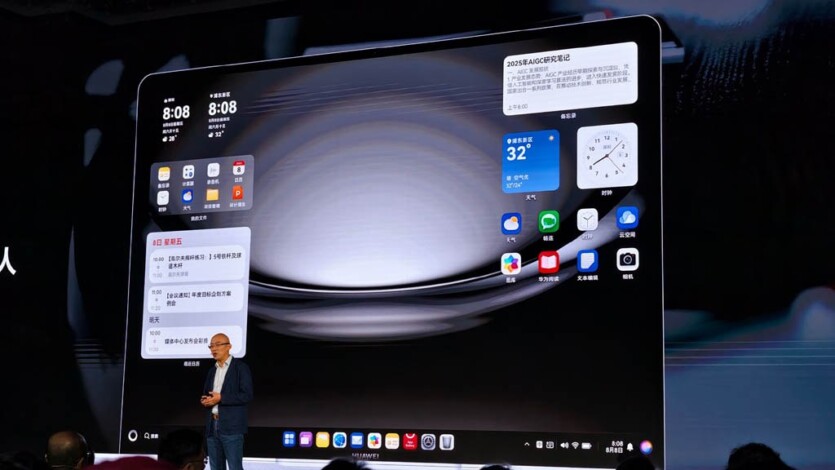
In a world where geopolitics is increasingly intersecting with technology, Huawei continues to move towards technological independence. The next step on this path was the presentation of its own full-fledged operating system for computers — HarmonyOS PC (or Hongmeng Computer for the Chinese market).
The company announced this operating system during the HarmonyOS Computer Technology and Ecosystem Communication Event, and the new product was presented by Zhu Dongdong, President of Huawei’s Tablet and PC Division.



HarmonyOS PC is based on three main components:
- HarmonyOS Base — the core of the system, including HarmonyOS Kernel, Ark Engine for graphics and UI performance, and StarShield architecture for security. Additional backend components provide stability and flexibility.
- HarmonyOS Ecosystem — an ecosystem that already includes more than 150 exclusive applications and more than 2000 universal ones. The built-in applications include WPS Office and a number of programs for basic computer tasks.
- HarmonyOS Experience — user experience with support for over 1000 external devices: 800 standard peripherals and 20 categories of devices (keyboards, mice, monitors, etc.). In addition, the system supports more than 200 additional devices, such as printers, scanners, and others.
HarmonyOS PC has deep integration with artificial intelligence, which is in line with Huawei’s overall «smart» ecosystem. Although the company did not disclose the details of the interface, a video on Huawei’s official Weibo page shows that the OS desktop has a bottom dock with icons. This solution resembles the Apple macOS interface.
Huawei said that the first devices with HarmonyOS PC will be available on May 19.
Time will tell whether Huawei will be able to break the monopoly of Windows and macOS. Given the huge size of the domestic Chinese market, there is every chance of this happening. Thanks to China and neighboring markets, HarmonyOS could become the third major OS on the market.
And it all started with Huawei is blacklisted and restricted access to Google servicesand the company began to develop and released its own mobile OS. Over time, Huawei’s ambitions grew, and it announced its intention to create an OS for everything.
Source: gsmarena

Spelling error report
The following text will be sent to our editors: